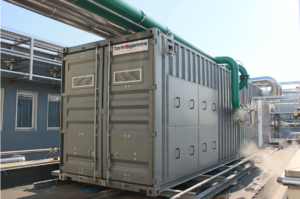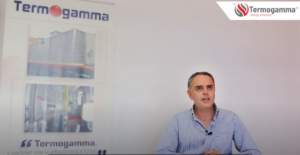How to get incentives with high-efficiency cogeneration
Cogeneration is a technological solution that allows the simultaneous production of electrical and thermal energy; by exploiting thermal energy through an absorber, it is also possible to produce cooling energy, and in this case it is called trigeneration.
A cogeneration/ trigeneration plant is well suited to those industrial realities that have concomitance of electrical and thermal loads, bringing primary energy savings that can reach 30%. To find out more about these types of systems, read the article dedicated to cogeneration and trigeneration.
In addition to a saving generated by the production of energy at a lower cost, for these types of solutions there are government incentives called white certificates or energy efficiency certificates (TEE).
They can be applied to various types of energy efficiency interventions (we talked about it here), specifically, as regards cogeneration plants, there is a dedicated support scheme, regulated by the Ministerial Decree of 5 September 2011 concerning installations falling within the category of high-efficiency cogeneration (CAR).
Criteria for exploiting the benefits of high-efficiency cogeneration:
The TEEs are intended for cogeneration plants that obtain the qualification of “high-efficiency cogeneration” (CAR), ie, where the primary energy saving (or PES, primary energy saving) is
- At least 10% for cogeneration plants larger than 1MWe
- Greater than zero for cogeneration plants with a size less than 1 MWe
The PES, namely the primary energy saved and compares – through a formula – the thermal and electrical efficiency of a traditional plant with one cogeneration.
Come veHow the TEE for the CAR is awarded:
The advantage of TEE CAR is given by the possibility of concluding a withdrawal agreement with the GSE, which undertakes, at the request of the manufacturer, to withdraw the TEE at a fixed price, unchanged during the ten-year agreement, equal to the average market price in the year of activation.
Depending on the market, the producer can decide each year whether to withdraw the securities to the GSE at the agreed price, or, if the market exchanges at higher values, liquidate the securities either on the market or through bilateral agreements.
Another important aspect to consider is that the titles TEE CAR are delivered directly to the manufacturer, a different case than all other types of TEE in which the titles are recognized at ESCO.
The customer will therefore be the direct beneficiary of the economic proceeds.
AOther advantages
Users who have installed a high-efficiency cogeneration plant:
- They are exempted from the obligation to purchase Green Certificates provided for producers and importers of electricity that do not exceed 100 GWh per year of production and import of energy from non-renewable sources.
- They are exempted from the payment of the variable component (€/kWh) of the system charges for self-produced electricity.
- If they use methane cogeneration they can take advantage of a special tax that relief on the excise duty of natural gas used for the CAR.
- They may benefit from simplified administrative procedures.
Get the maximum result with the least effort with Termogamma
Termogamma offers a complete service for cogeneration plants, managing for the customer all the practices to be delivered to the GSE, with annual data, in order to obtain the maximum benefit from the latter.
The advantages of this option are multiple. On the one hand, the customer is free from various concerns: he does not have to manage any practice and must not remain constantly updated about the new regulations concerning the incentive mechanism.
On the other hand, Termogamma, having a 360-degree knowledge of the machine, manages to administer it to maximize economic return.




